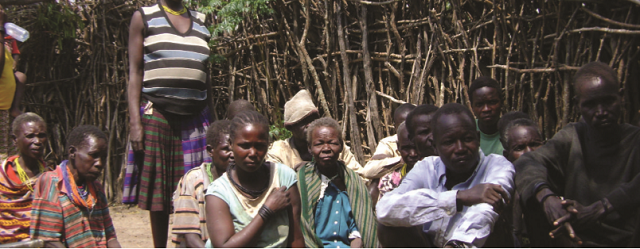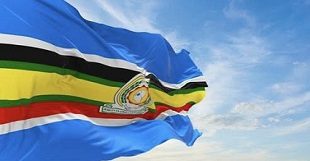
One of the traders, Hakim Kyewalabye, described how even as talk of food shortages in Uganda raged since November last year, he has watched huge trucks load and ferry away maize and beans for export. The 59-year old man says some of the buyers are agents of buyers from far away countries like Saudi Arabia and Dubai, in the United Arab Emirates.
Kyewalabye described the spike in food prices as “slight”. Another trader, William Jjuuko, also said food prices, particularly of maize, have “remained slightly up”. Jjuuko, who runs Mbale Grain Milling in Kisenyi, said foreign buyers have pushed prices up. In Uganda, the seasonality in the cropping calendar affects the supply of food commodities in markets and price rises as stocks from the previous season run out are normal. In fact, the Consumer Price Index (CPI) for December 2016 from the Uganda Bureau of Statistics (UBOS) shows that by December, food prices were year-on-year lower last year. The World Food Programme market price index produced by its Analysis, Monitoring and Evaluation Unit in December, last year, also noted that average retail prices for maize grain, sorghum and beans in Karamoja, in northeastern Uganda were higher in December 2016 compared to November by 24%, 14% and 19% respectively due to low supply.
In comparison to December, 2015, the long term average prices for maize grain, sorghum and beans remained higher in December 2016. But while in the past prices would quickly go down as soon as the new harvest started, these days they generally stay up.
Jjuuko says these days, when his buyers go to maize growing regions like Mubende, Fort Portal, Kigumba and Kiboga during the harvest season (June/July and December), they have to compete with Rwandan and Kenyan grain buyers who camp in villages with dozens of heavy duty 50-tonne trucks buying maize at relatively higher prices than the local buyers are willing to pay.
“We now have to compete with them but we can’t because they are better resourced,” he says.
Jjuuko says before the foreign buyers infiltrated the Ugandan market; it was possible for local traders to find maize from the previous season at the beginning of a new season harvest. Back then when maize would “float,” the buyers would choose between old or new maize and prices would be as low as Shs 500-700 per kilogramme.
Jjuuko says, for the first time since 2015, prices have stuck at Shs1, 180 per kg. As a result, a 50kg bag of “super white” posho goes for Shs110, 000 up from Shs80, 000 in 2015 in their warehouse.
The wholesale price for rice has risen from Shs2, 400 in December last year to Shs3, 400 this February. That is a 42% jump. The price of beans too has risen by 40% over the same period from the Shs2, 000 per kilogramme to Shs2, 800 over the same period. But the yellow beans popularly known as “Masavu” which come from as far as Rwanda, a kilogramme goes for Shs3, 300.
In fact Kisenyi is not an export only area. It is also a reception for food crops imported into the country. Currently, the main food import in the market is rice – from Tanzania.
“There is no more rice from Uganda,” says Kyewalabye who says he has been dealing in food commodities for over 35 years.
Kyewalabye says the lack of control mechanisms for the food sector in the country partly explains the current food crisis in the country.
“It is a big issue,” he says. “In Tanzania, the government buys a certain amount of food from its farmers before letting them sell the surplus to other buyers— foreign or not.”
He says the Tanzanian government did that in August last year when it slapped a ban on rice exports.
“Here in Uganda, it is a free for all kind of market,” Kyewalabye says. Although he profits from the scarcity, he does not sound amused.
He is not impressed even by reports that the government now wants to buy Shs56 billion worth of food to distribute as relief in the most hard hit areas of Karamoja, Teso, Lango, Acholi, Bukomansimbi, Bukedi, West Nile, Busoga, Isingiro, and Kalungu.
“They could have actually bought this food from local farmers and kept it somewhere to prepare for the lean season. These same people have been watching as food goes abroad at laughable prices,” he said.
 The Independent Uganda: You get the Truth we Pay the Price
The Independent Uganda: You get the Truth we Pay the Price


